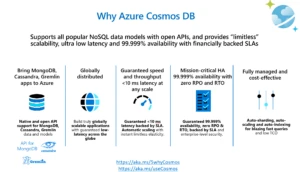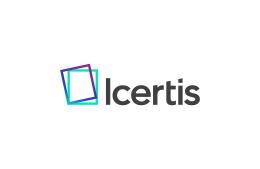
Using NoSQL with Azure Cosmos DB across varied industry use cases
By Patrik Bihammar, Azure Open Data Platform Lead at Microsoft Asia
NoSQL database technologies such as MongoDB (document), Cassandra (wide-column), and Gremlin (graph) are arguably the biggest and most transformative trend in the universe of databases over the past decade. The digital transformation that we have all witnessed across every industry simply would not have been possible without NoSQL.
There is sometimes a misconception that NoSQL is mainly required by a few cloud and digital natives. Nothing could be further from the truth. This article will provide a perspective on common use cases for NoSQL after analyzing dozens of real Azure Cosmos DB customers across industries.
But before we get to use cases, here are some overarching benefits of NoSQL over traditional relational/SQL databases, which were created primarily to serve internal business applications in the 1980s. They continued to fare pretty well in the early days of the World-Wide-Web, which led to the popularity of MySQL and the LAMP stack in the mid-1990s.
However, the limitations of relational/SQL databases like rigid schema and scale-up only became apparent in the early 2000s. With the internet becoming available to millions of users, the scale and performance requirements began to grow exponentially.
Various NoSQL databases (table, key-value, document, wide-column, and graph) emerged to solve these scalability and fixed schema challenges in the mid-2000s. Since then, NoSQL has become well-established and today play a key part in all global, online, and mobile applications.
Azure Cosmos DB is a multi-model NoSQL database, supporting all common NoSQL data models through open APIs that is fully cloud-based and offered as database-as-a-Service (DBaaS) to ensure truly limitless scale and performance.
This video gives a quick orientation of why Azure Cosmos DB and the Azure Cosmos DB Essentials series is a good place to understand NoSQL in general and Azure Cosmos DB in particular.
Today, Azure Cosmos DB is used in all cloud native applications and across a wide variety of use cases. These use cases typically have the following in common.
High volume, velocity and variety of data that is being generated (e.g. from IOT devices,) and needs to be ingested and aggregated from different sources and systems and then served to a variety of devices and users, in real-time regardless of where they reside across the globe. The information is often presented to users via mobile applications and needs to provide a real-time user experience.
That’s a tall ask and requires:
- Flexible data models that support both structured and unstructured data
- Limitless, immediate and elastic scalability
- Low latency (<10ms) to ensure instant responsiveness across the globe
- Always-on high availability (99.999%)
Azure Cosmos DB offers all of this with financially backed SLAs.

Above are some real customer examples across a variety of different industries that are using Azure Cosmos DB. There are a few common themes across different industries e.g. personalization, profile management, customer 360, stock inventory, payments, order tracking, high volume IoT data aggregation, and serving data to mobile applications.
Building mobile apps and super apps
In majority of the industry use cases, companies serve their customers in real-time via mobile apps. Sometimes these mobile apps grow into super apps serving multiple use cases e.g. in retail, health, insurance, and banking apps. Azure Cosmos DB is used to serve real-time data to these mobile applications for user profile management to manage user preferences, personalization to serve up relevant ads and offers, online payments, authentication, transactions etc.

Retail (e.g. ASOS, Albertsons, Chipotle etc.)
- Mobile shopping apps
- Real-time personalization anduser profile management,offering a personalized and consistent user experience across devices, product recommendation, targeted ads, promotionsand loyalty programs.
- Shopping carts andproduct catalog
- Real-time stock inventory
- Real-timeorder processing
- Point-of-sales (POS) and digital receipts
- Customer 360 to get a real-time single view of customers
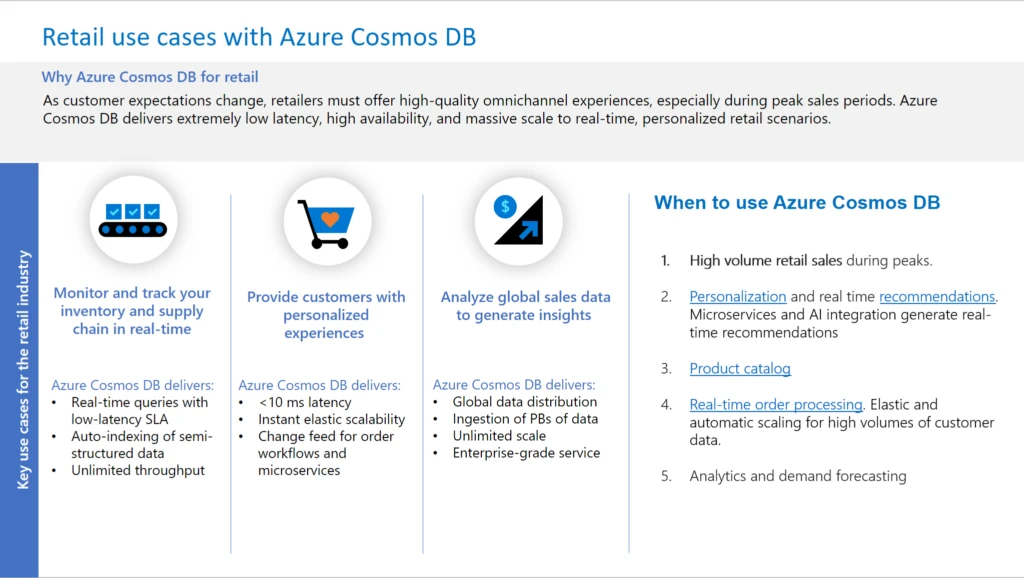
FSI (e.g. Munich Re, ABN Amro, DUCA Credit Union, Vipps, HSBC)
- Mobile banking apps and payments(e.g. Vipps and HSBC)
- Real-time payments (e.g. East West Bank)
- Fraud detection, credit risk and other risk assessments (e.gMunich Re)
- Real-time insights (Stream processing with OSS and NoSQL data engines)
- Customer 360 to get a real-time single view of customers
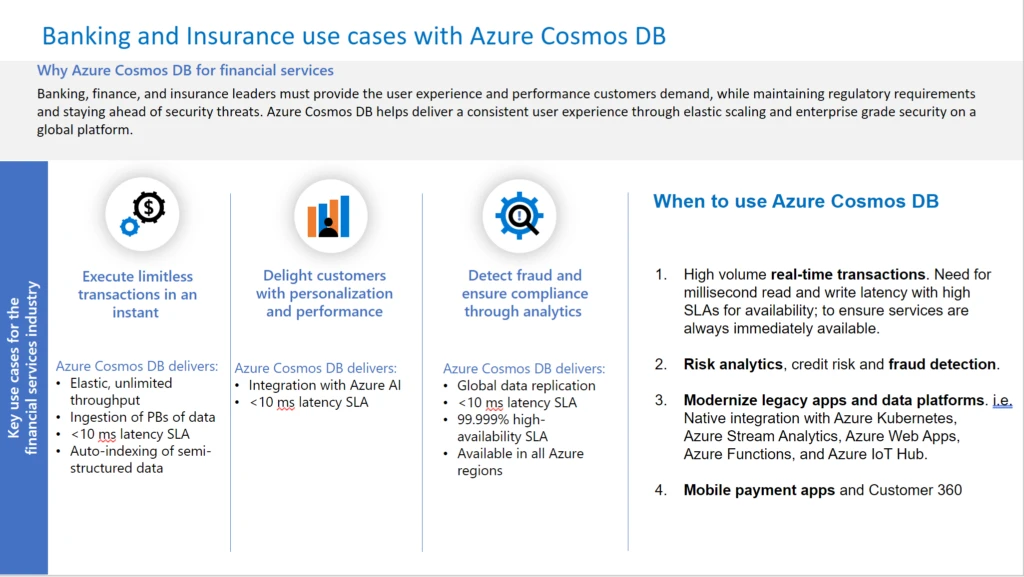
Manufacturing & automotive (e.g. Mercedes, Coca-Cola, Olympus, Atlas Copco, Bosch, Zeiss etc)
- Real-time IoT data ingestion from smart devices
- Stock inventory management
- Supply-chain tracking
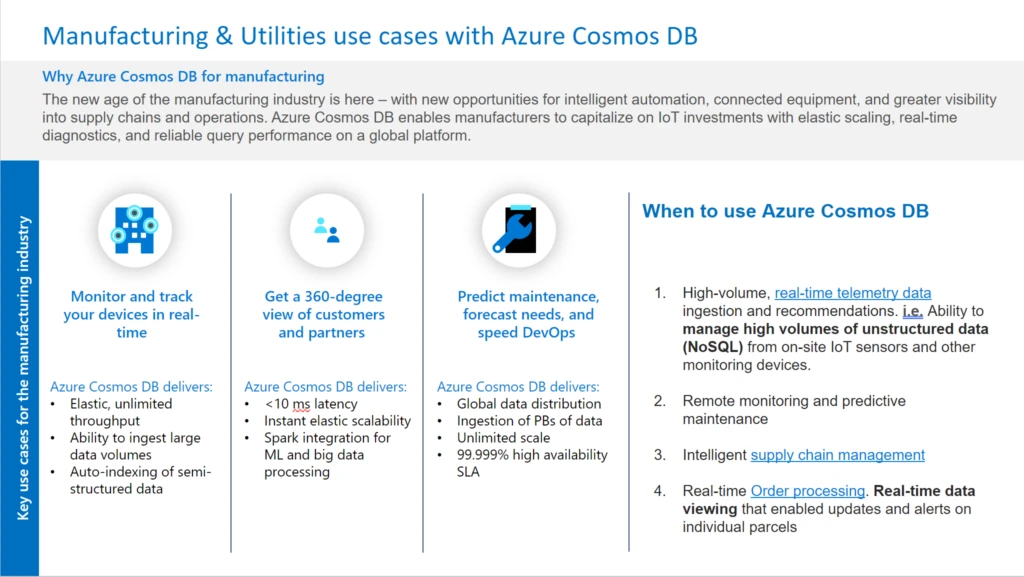
Utilities, Telco, Oil & Gas (e.g. ExxonMobil, SitePro, EnBW Zero Friction etc.)
- Mobile apps for real time utilities usage, billing/payments
- Real-time IoT from edge devices
- Customer 360 to get a real-time single view of customers
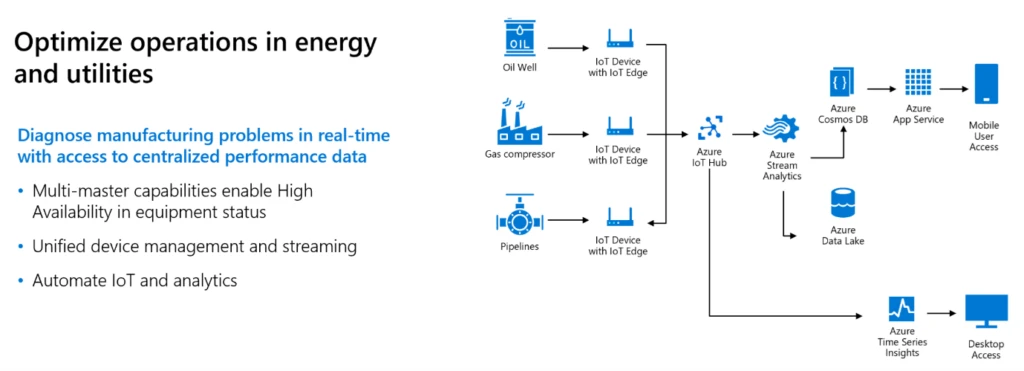
Logistics & Transportation (e.g. DHL LINX Cargo, Asiana Airlines, Singapore Airlines etc.)
- Mobile apps for order tracking and membership programs
- Shipping and order tracking (Supply chain traceability solution using Azure Cosmos DB Gremlin API)
- Loyalty programs (airlines)
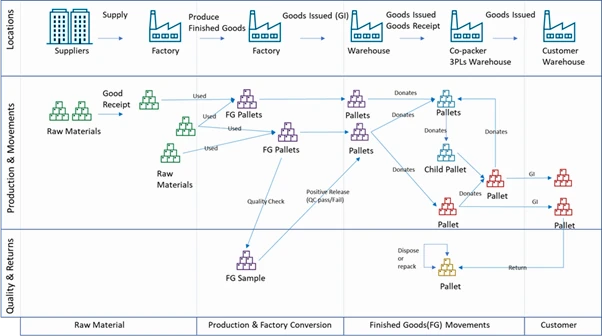
Healthcare (e.g. NSW Health, Walgreens, Siemens, Bayer, Rx Health, Hendrick Health)
- Mobile apps for digital doctor appointments, insurance claims and settlement, health tracking etc.
- IoT and research data
- Customer 360 to get a real-time single view of customers
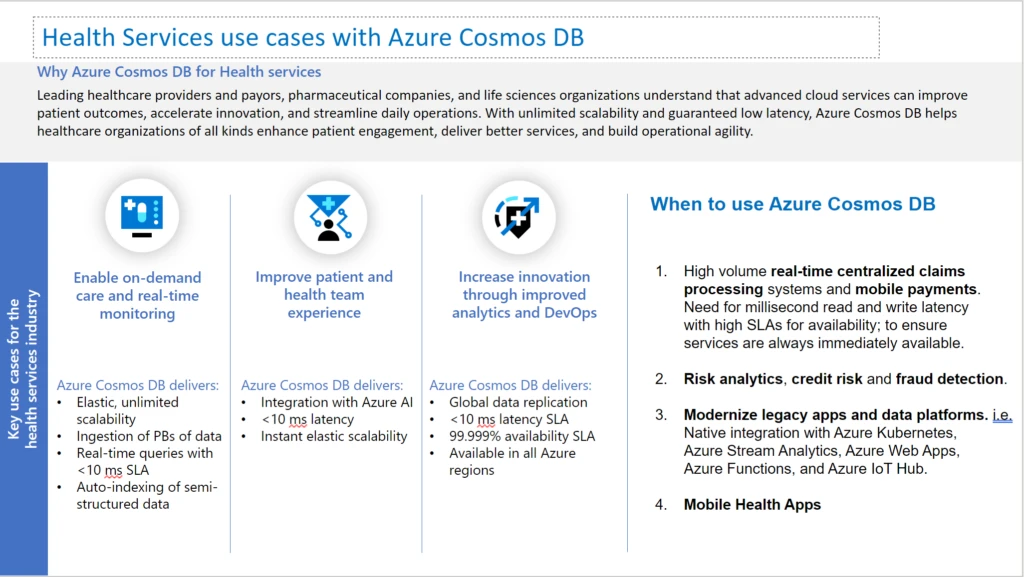
Gaming (e.g. Next Games, Halo, Saber, Xbox, Minecraft)
User profiles, items inventory, real-time scoreboards etc. Here is an architecture reference specifically for gaming.
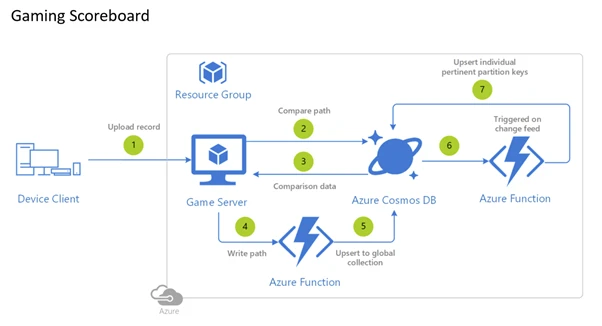
You can find more information about Azure Cosmos DB Architecture Guidance here.
You can try Azure Cosmos DB for Free or use the Azure Cosmos DB free tier to get an account with the first 1000 RU/s and 25GB of storage free.
You can also take the Azure Cosmos DB Developer Certification and leverage the free online learning path here: Azure Cosmos DB Developer Certification – Learn


